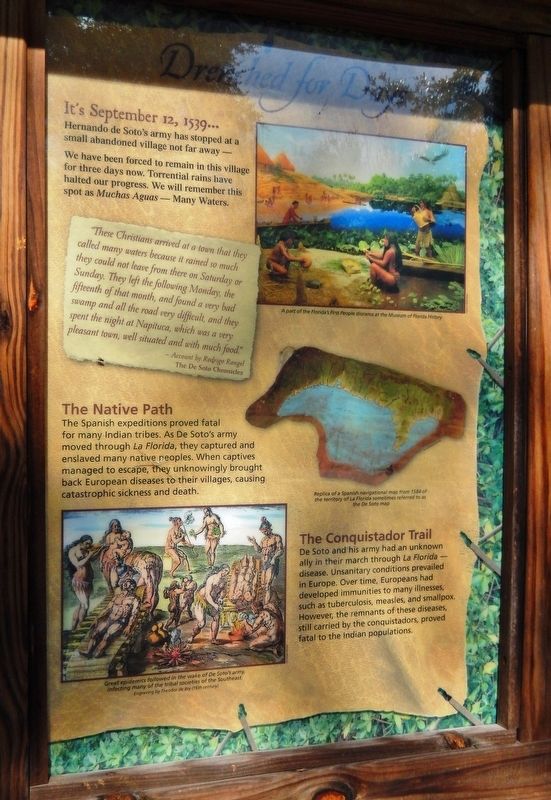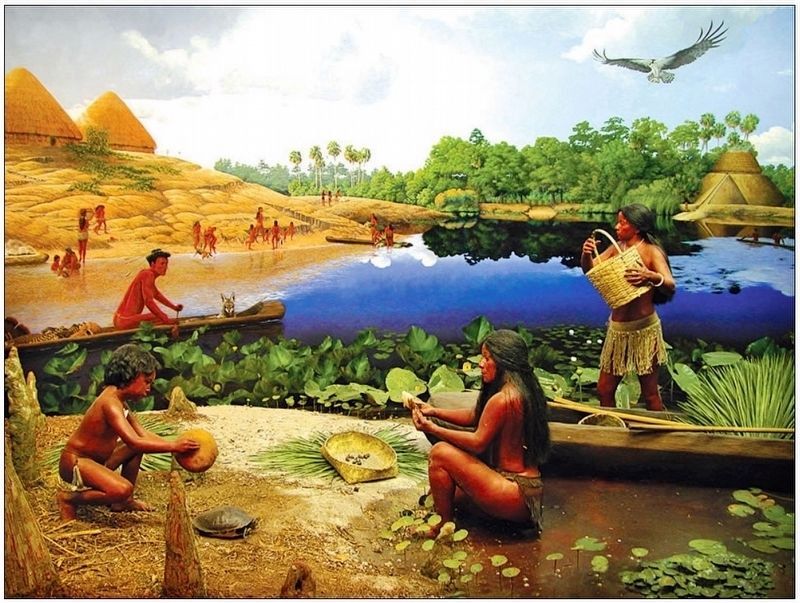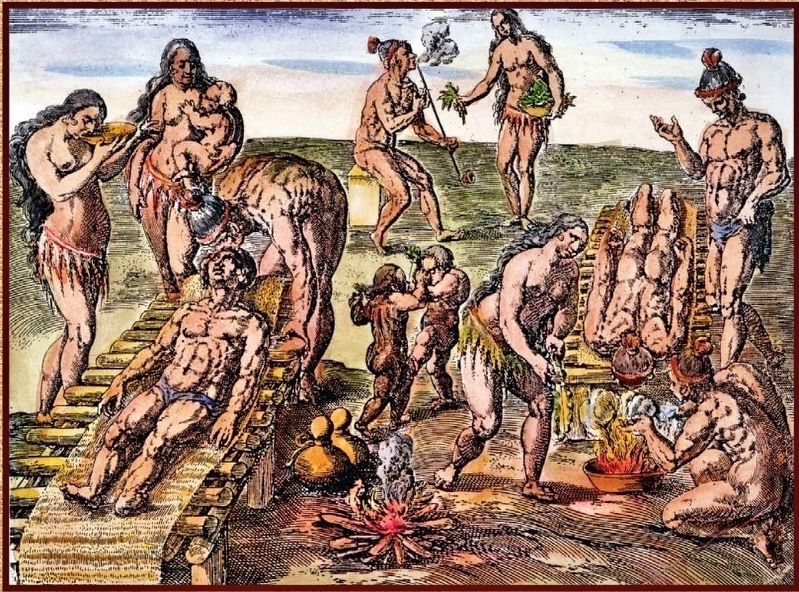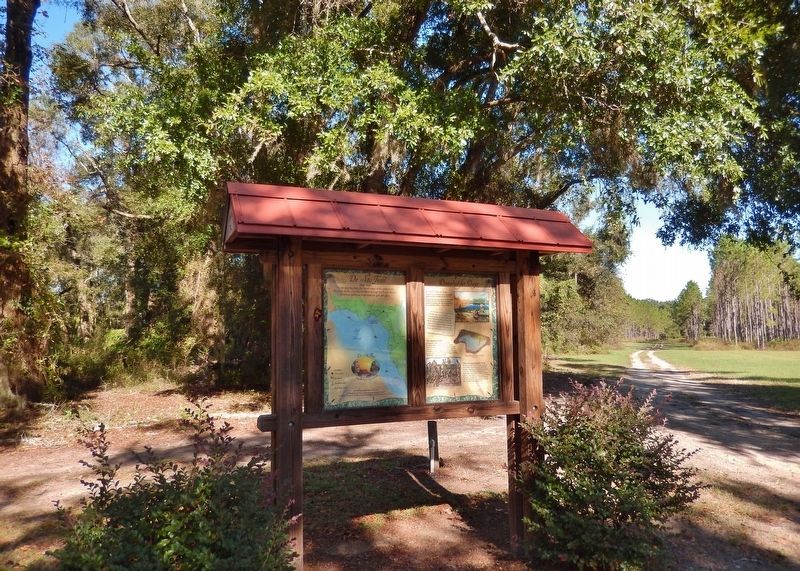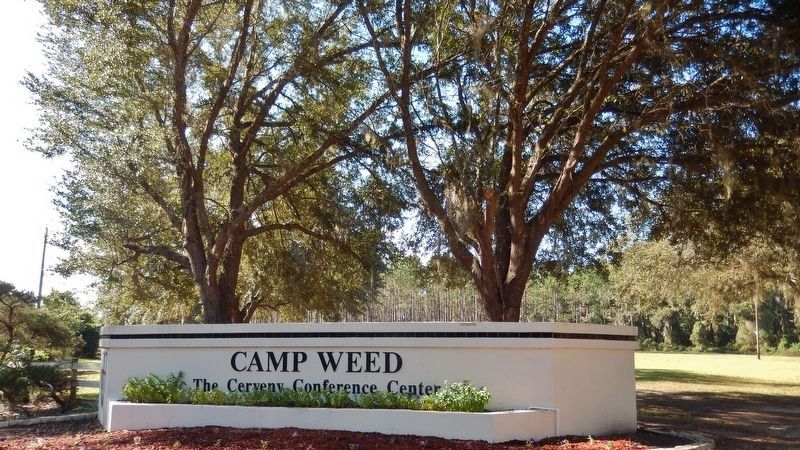Near Live Oak in Suwannee County, Florida — The American South (South Atlantic)
Drenched for Days
Florida De Soto Trail
— September 12, 1539 —
Hernando de Soto’s army has stopped at a small abandoned village not far away –
We have been forced to remain in this village for three days now. Torrential rains have halted our progress. We will remember this spot as Muchas Aguas - Many Waters.
”These Christians arrived at a town that they called Many Waters because it rained so much they could not leave from there on Saturday or Sunday. They left the following Monday, the fifteenth of that month, and found a very bad swamp and all the road very difficult, and they spent the night at Napituca, which was a very pleasant town, well situated and with much food.”
- Account by Rodrigo Rangel
The De Soto Chronicles
The Native Path
The Spanish expeditions proved fatal for many Indian tribes. As De Soto’s army moved through La Florida, they captured and enslaved many native peoples. When captives managed to escape, they unknowingly brought back European diseases to their villages, causing catastrophic sickness and death.
The Conquistador Trail
De Soto and his army had an unknown ally in their march through La Florida - disease. Unsanitary conditions prevailed in Europe. Over time, Europeans had developed immunities to many illnesses, such as tuberculosis, measles, and smallpox. However, the remnants of these diseases, still carried by the conquistadors, proved fatal to the Indian populations.
Erected by Florida De Soto Trail, Florida Department of Transportation, the Florida Park Service, and the National Park Service. (Marker Number 24.)
Topics. This historical marker is listed in these topic lists: Colonial Era • Exploration • Native Americans • Notable Events. A significant historical date for this entry is September 12, 1539.
Location. 30° 15.007′ N, 82° 54.119′ W. Marker is near Live Oak, Florida, in Suwannee County. Marker is on Camp Weed Place, 0.1 miles west of 75th Drive, on the right when traveling west. Marker is located on the north side of the road, at an intersection with an unmarked dirt road. Touch for map. Marker is at or near this postal address: 11057 Camp Weed Place, Live Oak FL 32060, United States of America. Touch for directions.
Other nearby markers. At least 8 other markers are within 7 miles of this marker, measured as the crow flies. Harry Tyson Moore ~ A Native Son of Suwannee County (approx. 5½ miles away); Edward Waters College Original Site (approx. 5.6 miles away); Suwannee County (approx. 5.9 miles away); To Honor Stephen Collins Foster (approx. 5.9 miles away); Suwannee County Veterans Memorial (approx. 5.9 miles away); Lynnette Ricketson Millennium Park
(approx. 5.9 miles away); Plot Exposed (approx. 6.2 miles away); Florida Memorial College ~ Original Site (approx. 6.3 miles away). Touch for a list and map of all markers in Live Oak.
More about this marker. Marker is a large, composite plaque mounted vertically within a heavy-duty wooden kiosk.
Regarding Drenched for Days. Hernando de Soto landed at Tampa Bay in 1539 and made his way north in search of gold and riches. A controversial figure in American history, Spanish Conquistador Hernando de Soto is regarded as a hero and brave explorer by some — and an overzealous madman by others. The De Soto Trail shows him as a product of Medieval Europe, a brutal society forged over 780 years of warfare. It also tells the story of the Native American peoples of 16th-century Florida, a highly advanced collection of chiefdoms struggling against each other to gain dominance over their regions.
Related markers. Click here for a list of markers that are related to this marker. Florida De Soto Trail
Also see . . . De Soto’s Expedition to North America. In 1536, de Soto obtained a royal commission to
conquer and settle the region known as La Florida (now the southeastern United States), which had been the site of earlier explorations by Juan Ponce de León and others. De Soto set out from Spain in April 1538, set with 10 ships and 700 men. After a stop in Cuba, the expedition landed at Tampa Bay in May 1539. They moved inland and eventually set up camp for the winter at a small Indian village near present-day Tallahassee. (Submitted on November 6, 2018, by Cosmos Mariner of Cape Canaveral, Florida.)
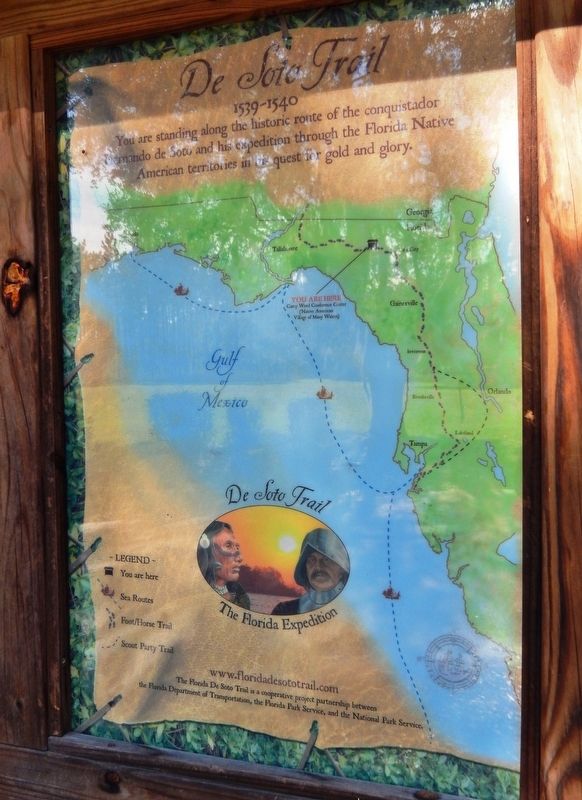
Photographed By Cosmos Mariner, November 3, 2018
4. Florida De Soto Trail Map (panel to the left of marker in kiosk)
1539-1540
Credits. This page was last revised on January 6, 2021. It was originally submitted on November 6, 2018, by Cosmos Mariner of Cape Canaveral, Florida. This page has been viewed 300 times since then and 14 times this year. Last updated on November 21, 2018, by Cosmos Mariner of Cape Canaveral, Florida. Photos: 1, 2, 3, 4, 5. submitted on November 6, 2018, by Cosmos Mariner of Cape Canaveral, Florida. 6. submitted on December 27, 2018, by Cosmos Mariner of Cape Canaveral, Florida. • Bernard Fisher was the editor who published this page.
